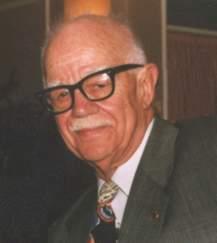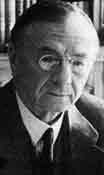Opinion!
This is coolbert:
Here is some generally accepted military opinion received from a reliable source:
With regard to the Global War on Terror [GWOT]:
1. The Global War on Terrorism [GWOT] is here to stay.
We will be fighting this war for a long time to come. Decades perhaps. Perhaps for the remainder of this century??!!
2. To fight this GWOT we WILL need a larger ground force. It should be understood that the GWOT is a global phenomenon.
As a result, the U.S. suffers from strategic overreach!! The U.S. DOES need to develop a "grand strategy" to make the most efficient use of resources and assets. The war against the jihadists is GOING to be LONG, COSTLY, DRAWN OUT, DIFFICULT, AND UNAVOIDABLE!
3. Having legitimate and effective governments in the Islamic world will go a long way to handling the GWOT problem from a U.S. perspective. Keep in mind that establishing legitimate and effective governments is not an easy tasks. We can encourge, but not push or mandate.
4. The Islamicists are not deterred by the use of force as opponents were during the Cold War.
[My comments: The radical Islamicists are not afraid to use nuclear weapons as would have been say the Soviet Union. The Islamicists are NOT afraid of retaliation in kind. Rather, they would welcome retaliation in kind. The ideas of the think tank boys on the use of nukes goes down the tubes when you take the Islamicists into account!]
With regard to Iraq:
1. Some major prewar considerations [mostly in regard to chemical warfare and the aftermath of same] for the planners of Iraqi Freedom did NOT materialize. Thank GOD for it too!!
2. Wartime destruction of the communications grid presents a major problem. [This can be probably be quickly remedied with the installation of state of the art communications equipment, i.e., cell phones and such. DO NOT try to repair the existing pre-war system, just replace it!!]
3. Iraqi infrastructure is in a dismal state. Lots and lots of work has to be done. That gush and abundance of oil that was supposed to be will NOT be for some time to come. Can be done, but only by refurbishing or totally rebuilding the oil infrastructure from scratch. That will NOT be done overnight.
4. Psy ops and U.S. government communications to the Iraqi population is generally accepted as being a failure. We NEED to explain ourselves to the Iraqi better.
The long term success in Iraq depends upon:
A successful federation in Iraq is the ultimate goal. A political solution that will include everyone. Make sure everyone is included while allowing autonomy in certain areas. Sort of like the U.S. federal system. But ethnically based.
With regard to fiscal questions:
1. Defense expenditures cannot be sustained by the excessive use of borrowed money to pay for the total government budget.
2. The U.S. economy is relatively good, the stock market is resilient, interest rates are acceptable. This is all good.
3. 1/3 of government debt is held by foreign nations. Some not friendly. This cannot be good!! It has been suggested that ground forces be increased by 50,000 troops. To pay for this increased ground force, some projects and sacred cows will have to be looked at. This larger force will necessitate hard choices due to budgetary constraints. Some pet projects will have to be abandoned [??] or cut back dramatically.
These would include:
F-22 [air superiority fighter]. V-22 [Osprey. Damned thing looks ungainly and crashes.] Joint Strike Fighter [JSF. Not needing so many??]. Nuclear weapons [1000 at the most needed].
Future scenarios that MIGHT see U.S. involvement may include:
* Assistance to Musharraf in Pakistan.
* Preventing a nuclear war between India and Pakistan.
* Conflict with Iran over the Strait of Hormuz.
* China-Taiwan.
* Peacekeeping missions in a variety of locales.
[My own comments: You will note the amount of consideration that military folks place upon budget, spending, and such. Economic considerations not normally thought of as being within the purview of the military planner. Well, it is!!]
With regard to insurgency and terrorism:
1. Terrorism and insurgency are manifestations of weakness on the part of the perpetrators. They do NOT have the power to influence things in any other manner. A sign of weakness.
2. You do have choices when combatting insurgency.The U.S. can choose between winning or controlling when in conflict with insurgents or terrorists. Sometimes we win, sometimes we only control.
3. The U.S. can learn from past experiences of various counter-insurgencies. Do NOT confine the expertise from experiences of the U.S. in Vietnam. Look at Malaya, Northern Ireland, Red Brigades in Italy. AND Vietnam TOO!!
4. The current trend of insurgency and terrorism is nihilist and negative. The terrorists and insurgents do NOT offer a positive alternative.In some circumstances terrorism and insurgency maybe more of a law and order issue with violence held to acceptable levels, but never eliminated totally.
With regard to Al Qaeda:
Question?? Is Al Qaeda a snake or a mold??? Cut off the head [bin Laden] and the snake dies?? Or is it a pervasive and spreading mold.? Difficult to stamp out or totally eliminate. There have not been any attacks on U.S. homeland since 9/11?? Why?? Is the U.S. too hostile an environment to operate in?? Why??
With regard to Phase IV operations [reconstruction]:
Phase III operations [decisive military victory], and Phase IV [reconstruction] must have planning that is concurrent. General Marshall began planning for post-war reconstruction three years before the end of the war???!!! The peacekeepers in Afghanistan are grossly undermanned. Have one peacekeeper per thousand population. What is needed one peacekeeper per twenty population???!!!
U.N. DOES have a lot to offer for Phase IV operations??? 50 % of the U.N. officers involved in U.N. peacekeeping operations in the Congo are African. This is a big plus!! [My comments on the latter. It may be that 50 % of the officers are themselves African. That maybe too is a big negative as well. Officers from armies of African countries are notorious for being brutal, corrupt, and inept. They maybe NOT be a plus. My estimation!!]
With regard to democratization: [Is this in regard to the Arab world only??]
Arab-Israeli conflict is a central problem.
Arab ethnic rivalries are a serious impediment. [In the Bible, the Arab is described as being troublesome and quarrelsome, dwelling amongst their brother [they live in clans]. How true it is!!] A perfect example of this is Sadr's Army [Mookie], has cowed opponents with numerous acts of terrorism. Mookie is a 31 year old bastard if there ever was one!!
With regard to U.S. force structure:
1. The U.S. military is unique among nations of the western community. Perhaps unique throughout the world. The U.S. is the main target because we are so dominant throughout the world. Western European militaries cannot react and perform even close to what the U.S. military does. The U.S. military is a global dominant power, should realize it is, and act as it is.
2. We NEED more ground power. With close air support [CAS] that works. [My comments. Bring back a refurbished and souped up OV-10 Bronco with a plethora of weapons systems that can be used to support the troops on the ground.] [Additional comment. A limited draft may be needed. Use the reserve training divisions to bring the ground forces up to snuff in short order.]
coolbert.









